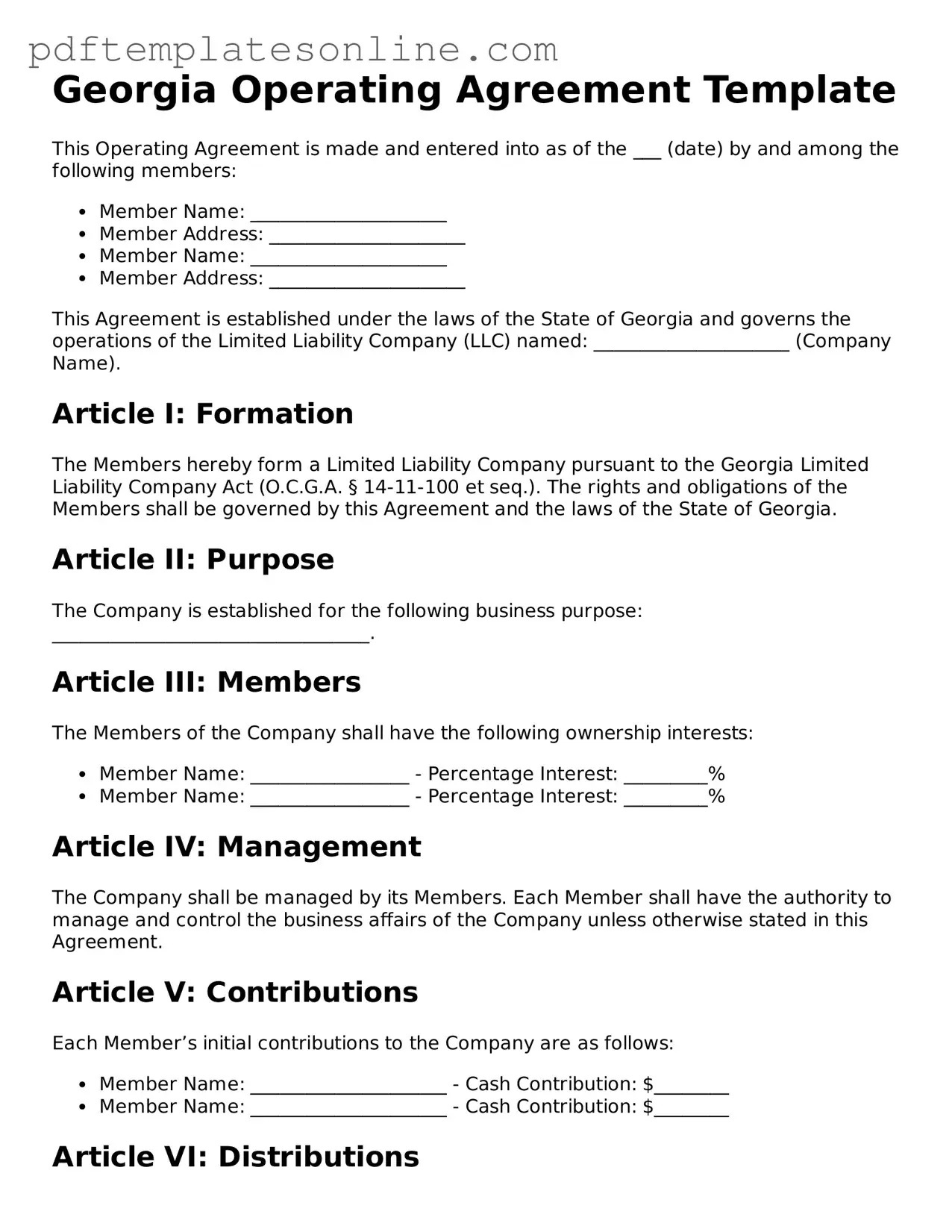Filling out the Georgia Operating Agreement form can be a straightforward process, but many people still make common mistakes that can lead to complications later. One frequent error is failing to include all members of the LLC. It’s crucial to list every member involved in the business. Omitting a member can create confusion and potential disputes down the line.
Another mistake often seen is not specifying the percentage of ownership for each member. Each member should have a clearly defined ownership interest. If these percentages are left blank or incorrectly stated, it can lead to misunderstandings about profit distribution and decision-making authority.
Additionally, people sometimes neglect to outline the management structure of the LLC. Whether the company will be managed by members or appointed managers should be clearly stated. This clarity helps in establishing roles and responsibilities, preventing conflicts among members.
Some individuals also forget to include provisions for adding or removing members. This oversight can create significant hurdles if changes in membership occur. Including a process for these changes ensures smooth transitions and maintains the integrity of the agreement.
Another common error is not having the agreement signed by all members. An unsigned agreement may not hold up in legal situations. It’s essential for every member to sign and date the document to validate the agreement and protect everyone’s interests.
Lastly, people often overlook the importance of keeping the Operating Agreement updated. As the business evolves, changes in membership, management, or ownership percentages may occur. Regularly reviewing and updating the agreement is vital to reflect the current state of the business and avoid potential disputes.
